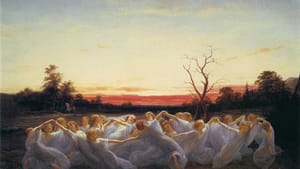Stay in the Loop
BSR publishes on a weekly schedule, with an email newsletter every Wednesday and Thursday morning. There’s no paywall, and subscribing is always free.
A well-balanced afternoon with Mozart
All-Mozart program by the Chamber Orchestra

When Mozart’s instrumental works are played well, they make me feel like I’m visiting another world. I tend to call it a fairyland, but it’s more robust than most images of fairyland. It’s more like the world inhabited by the elves in The Lord of the Rings. It’s a land of grace and orderly serenity, but it’s never dull or bland.
You can’t create that world merely by playing the notes Mozart put on paper. The musicians must balance Mozart’s simplicity and melodic inventiveness with tempos and dynamics that infuse it with life.
It’s a delicate balance, but guest conductor Thomas Hong maintained it in all the pieces he led at the Chamber Orchestra’s all-Mozart concert. The soloist for the event — the Chamber Orchestra’s concertmaster, Miho Saegusa — applied the same kind of sensitivity to her role in the pieces for violin and orchestra that opened the afternoon.
The Chamber Orchestra proved, once again, that small orchestras bring special virtues to Mozart’s scores. Hong conducted 15 strings, two horns, two flutes, and two oboes. In larger orchestras, with twice as many strings, the winds often sound like junior partners. With a smaller orchestra, the horns could set the mood in the places where they were obviously supposed to shape the basic character of a passage. The flutes sang over the strings in the slow movement of the violin concerto and created a distinct thin line in the sections where they contributed to a full-bodied burst from the whole orchestra.
Youthful exuberance
Mozart wrote all the pieces on the program before he was 20, and they all had their playful moments. Hong has a good feel for the subtleties of that aspect of Mozart’s youthfulness. In the divertimento, for example, there’s a section in which the horns play over plucked strings. It’s the kind of thing later generations would call “schmaltzy,” but it doesn’t sound schmaltzy when the conductor and the musicians understand the composer is fooling around.
Hong and Saegusa were both substituting for Augustin Dumay, a violinist-conductor with a big European reputation and a lengthy discography. Hong is a relatively young conductor who’s held several positions in which he served as an orchestra’s designated standby. He described himself as a “backup quarterback” during the post-concert chat with the audience, but he was being modest. He delivered the kind of performance that makes the first stringers worry about their jobs.
What, When, Where
Chamber Orchestra of Philadelphia: Mozart, Allegro in E major, Violin Concerto No. 3 in G Major, Divertimento in D Major, Symphony No. 1 in A Major. Miho Saegusa, violin. Thomas Hong, conductor. January 25, 2015 at the Perelman Theater, Kimmel Center for the Performing Arts, Broad and Spruce Streets, Philadelphia. 215-545-5451 or www.chamberorchestra.org.
Sign up for our newsletter
All of the week's new articles, all in one place. Sign up for the free weekly BSR newsletters, and don't miss a conversation.
 Tom Purdom
Tom Purdom